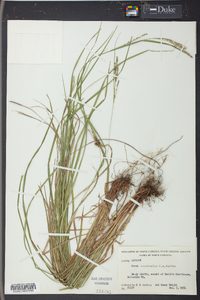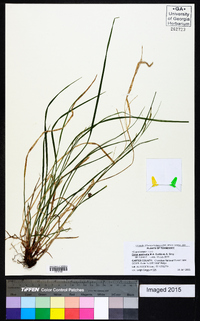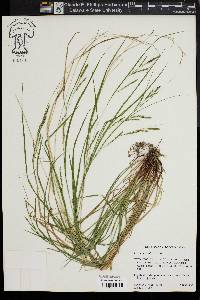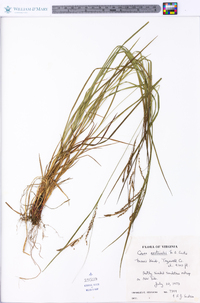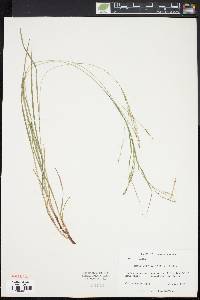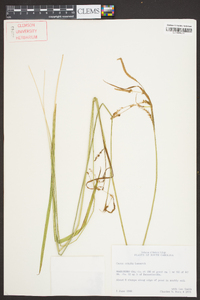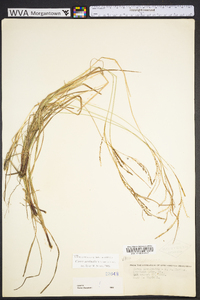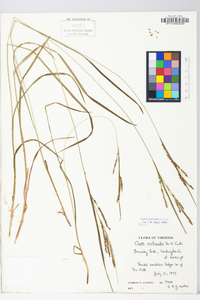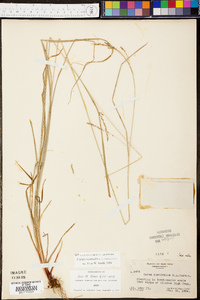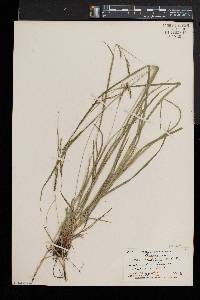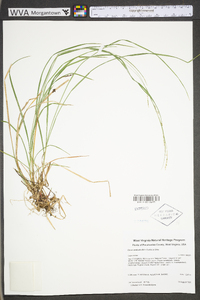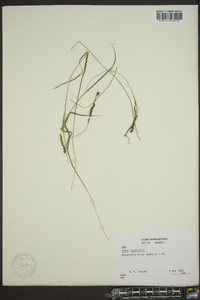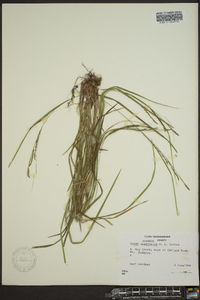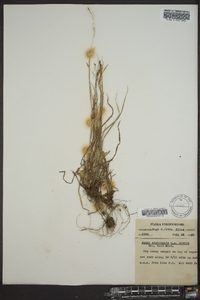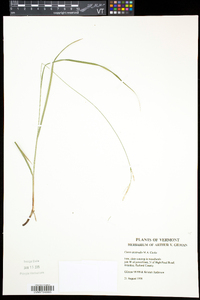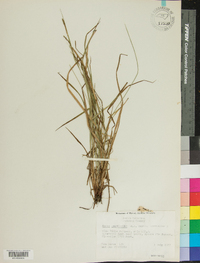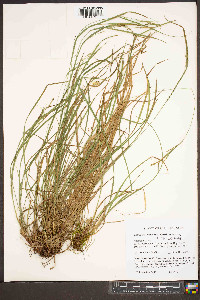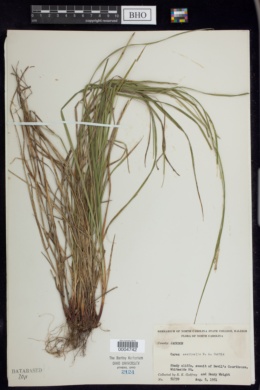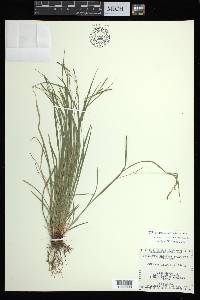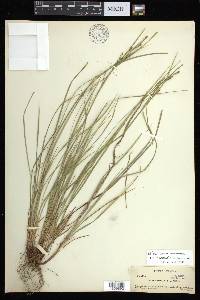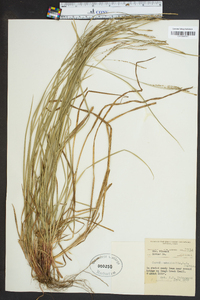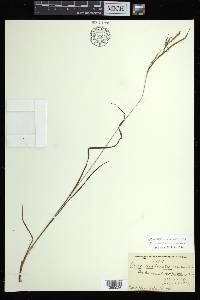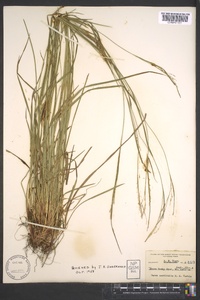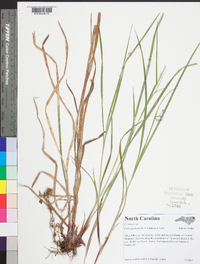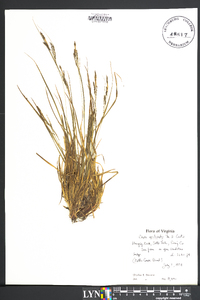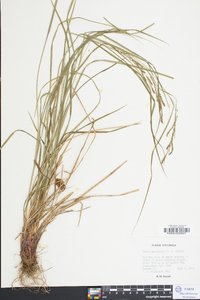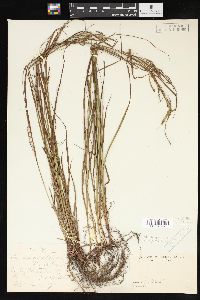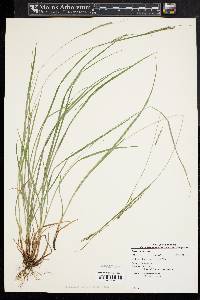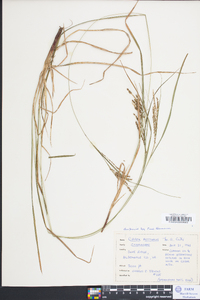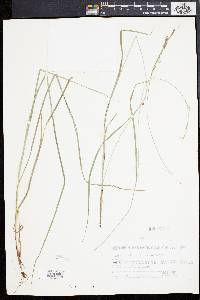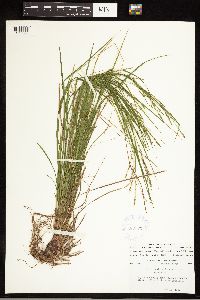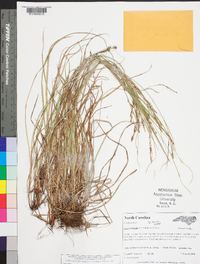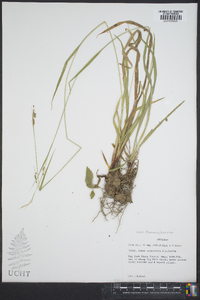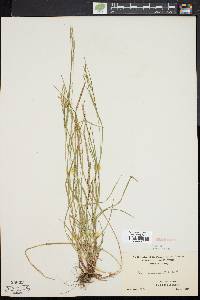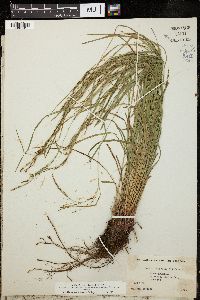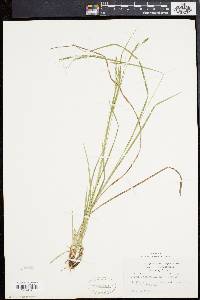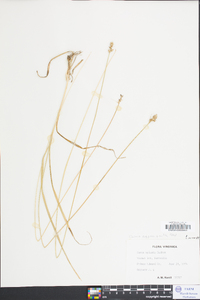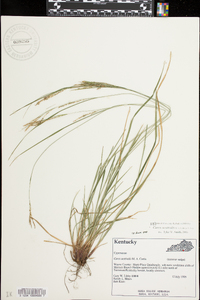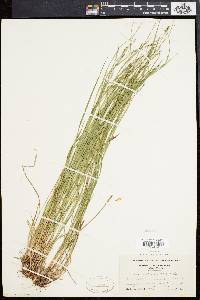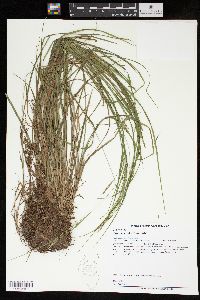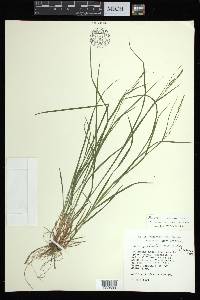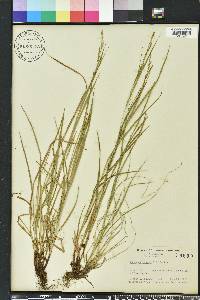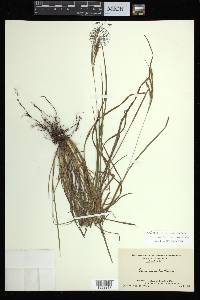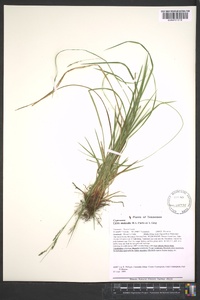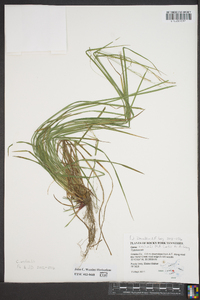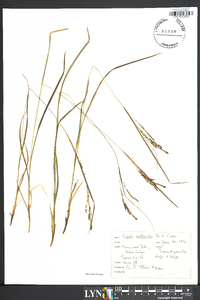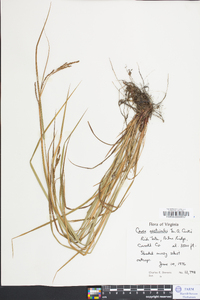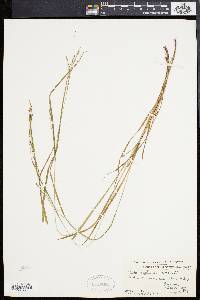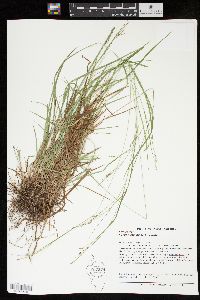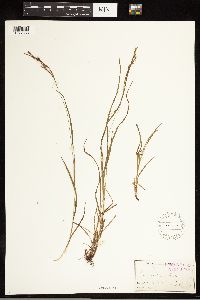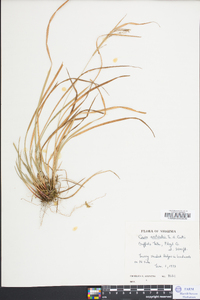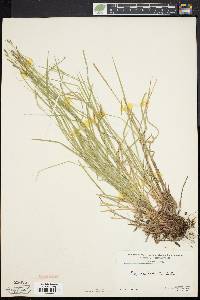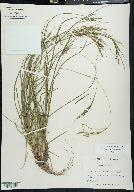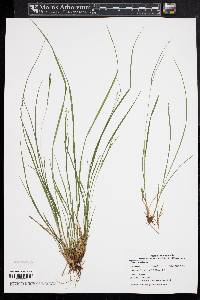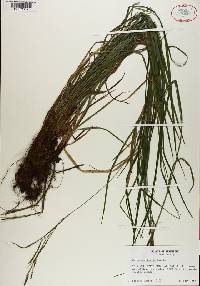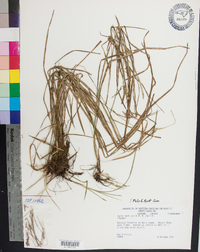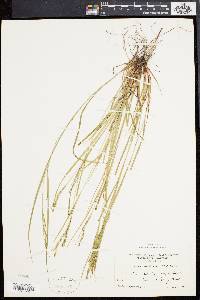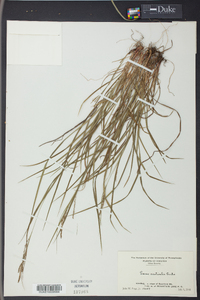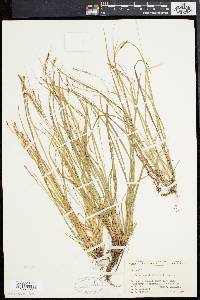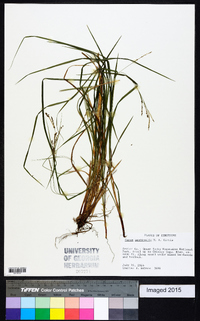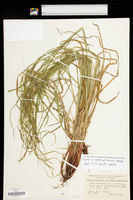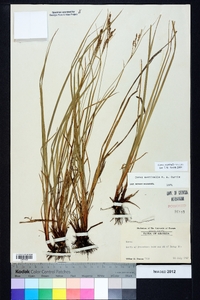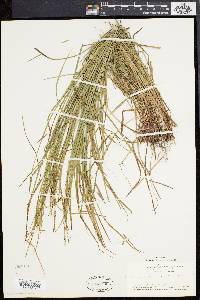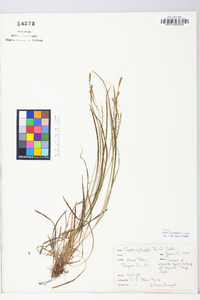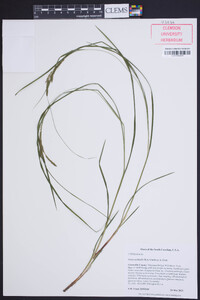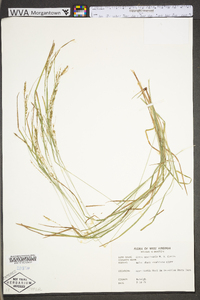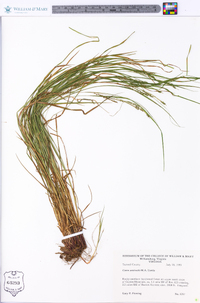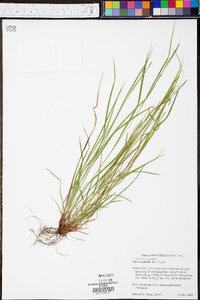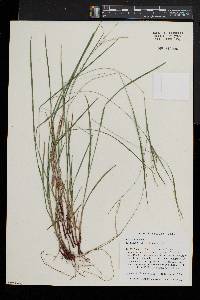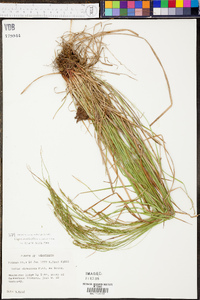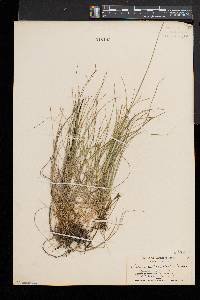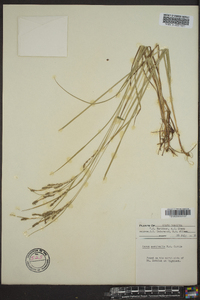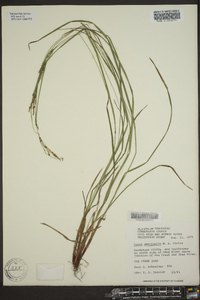
|
|
|
|
Family: Cyperaceae
Summer Sedge
|
Plants densely cespitose. Culms dark maroon at base; flowering stems 25-60 cm, usually longer than leaves at maturity, 0.5-0.7 mm thick, glabrous or sparsely pubescent, finely scabrous within inflorescence. Leaves: basal sheaths maroon, bladeless, pubescent; others grading from maroon to green on back, pale brown-hyaline, red dotted and usually pubescent on front; blades flat, 1.5-3 mm wide, glabrous or sparsely pubescent on both surfaces, especially near sheath, finely scabrous on margins. Inflorescences: peduncles of lateraal spikes 5-25 mm, shorter than spikes, glabrous; peduncle of terminal spike 5-25 mm, glabrous; proximal bracts often equaling or exceeding inflorescences; sheaths to 9 mm; blades 1-2 mm wide. Lateral spikes 2-4, 1 per node, well separated, erect or arching, pistillate with 15-30 perigynia attached 1 mm apart distally and 3 mm apart proximally, linear, 15-50 × 3-3.5 mm. Terminal spike gynecandrous, 20-35 × 1.5-3.5 mm. Pistillate scales pale hyaline, tinged with golden or reddish brown, with broad green midrib, red dotted, oblong-elliptic, shorter than mature perigynia, apex obtuse to cuspidate, glabrous. Perigynia green, copiously red dotted, 2-ribbed and finely 12-15-veined, loosely enveloping achene, ovoid-ellipsoid, 2-3.2 × 0.8-1 mm, membranous, base with short stipe, gradually tapering to acute beakless apex, glabrous. Achenes distinctly stipitate, 1.8-2.1 × 0.8-1 mm, stipe 0.5 mm. 2n = 56. Fruiting summer . Dry to mesic forests, seepage slopes, and meadows in the mountains; to 1600 m; Ala., Ga., Ky., Md., N.Y., N.C., Pa., S.C., Tenn., Vt., Va., W.Va. Variants of Carex aestivalis with larger perigynia have been collected from Virginia and North Carolina. Carex aestivalis apparently hybridizes with C. gracillima and C. virescens.
Tufted, 3-7 dm, ±purplish at base; main lvs 2-3 mm wide, usually hairy; sheaths hairy, at least on the ventral strip; terminal spike pistillate in the distal half; lateral spikes 2-4, pistillate, usually approximate and overlapping, cylindric, 2-4 cm נ2-3 mm, erect or nearly so, the lower on peduncles to 2 cm, the upper subsessile; upper bracts sheathless or nearly so; pistillate scales oval to obovate, half as long as the perigynium, obtuse or short-cuspidate; perigynia narrowly ellipsoid, 2.6-3.5 mm, a third as wide, obscurely several-nerved, tapering to an obtuse beakless tip; achene concavely trigonous. Woods, especially in the mts.; N.H. and Vt. to N.C., Ky., Ga., and Ala. Gleason, Henry A. & Cronquist, Arthur J. 1991. Manual of vascular plants of northeastern United States and adjacent Canada. lxxv + 910 pp. ©The New York Botanical Garden. All rights reserved. Used by permission. |
This project was made possible in part by the Institute of Museum and Library Services [MG-70-19-0057-19].
Powered by Symbiota


